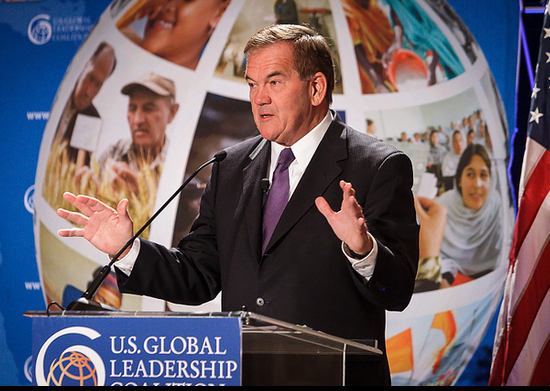The US Global Leadership Coalition issued its second-ever “Report of Reports,” which analyzes 30 reports from think tanks, public policy outfits, and advocacy organizations across the political spectrum. The bi-partisan coalition carefully read through these documents looking for points of agreement–that is, finding the specific points where a report from Brookings on US foreign aid might agree with a similar study from Heritage.
In all, they found 6 areas of consensus.
1. Strengthen Civilian Power. After more than a decade of an understaffed and underfunded foreign affairs workforce, there is clear consensus America must build even greater U.S. civilian capacity to keep our nation safe and ensure we have the ability to advance our core national security and economic interests. While the past two Administrations have taken important steps to beef up our capacity, there is a strong consensus more needs to be done.
2. Ensure Results-Driven Development. While effective aid has always been a goal, there is renewed focus and commitment that America must pursue effective, results-driven development applying data measurements and innovation to achieve greater impact. Specifically, there is a call to scale up aid effectiveness with rigorous evaluation, transparency, and accountability, and to challenge countries to take responsibility for their development.
3. Leverage the Private Sector. Recognizing the increasingly critical role the private sector, foundations, academic institutions, and other entities play in global development, there is a strong call to enhance public-private partnerships in a strategic manner to create the enabling environment for scalability.
4. Maintain Sufficient Resources. There is a growing message from military and business leaders to lawmakers of both parties, that despite confronting some of the most daunting economic challenges in several generations, the United States cannot afford to disproportionately underfund the civilian side of our national security, particularly given the growing global challenges facing America.
5. Improve Coordination Among the Players. As foreign assistance programs are administered across a variety of U.S. government agencies, streamlining the interagency process will continue to be essential in improving coordination, clarity of leadership, and consistency in U.S. foreign policy decision making and implementation.
6. Prioritize. Now is the time to focus on the things we do best and establish priorities to maximize impact and manage limited resources. The need will always be greater than what we are able to do, but we must scale up programs that show the greatest promise.
This is a particularly useful exercise. All to often in Washington people seek to heighten the contradictions between erstwhile rival approaches to policy questions, rather than finding points of commonality from which to build upon broadly shared visions. With the President’s second term foreign policy team starting to take shape, now is the ideal time to use these points of agreement as a yoke to pull together the broad coalition of interests that seek deeper global engagement and strong American leadership on development and diplomacy.
